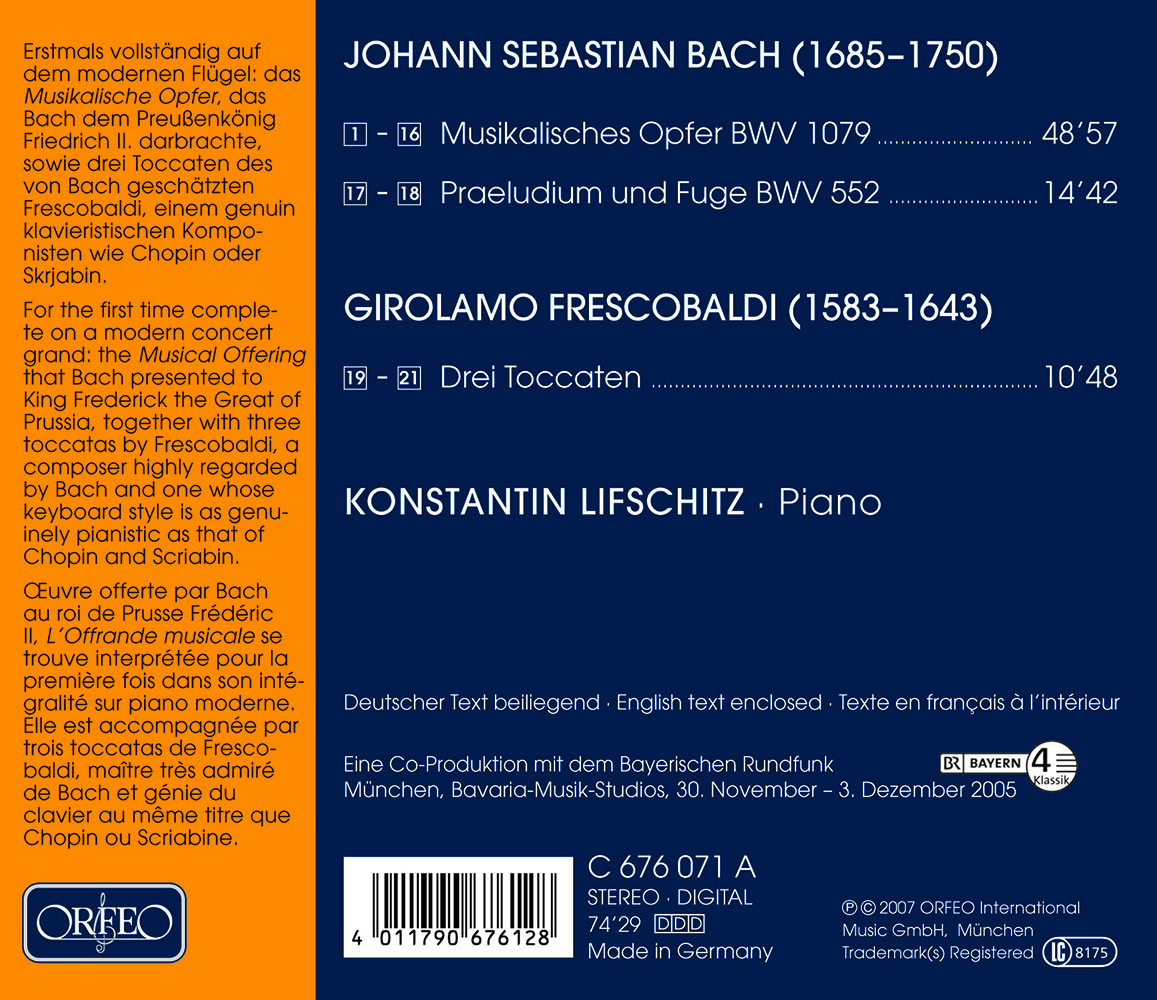Composer(s):
Artist(s):
Genre(s):
Instrumental
Period(s):
Baroque (1600-1750)
Label:
Orfeo
Catalogue No:
C676071A
Barcode:
4011790676128
Release Date:
10/2015
Available Format(s):
CD
Musikalisches Opfer
Bach, Johann Sebastian
Musical Offering, BWV 1079
Prelude and Fugue in E-Flat Major, BWV 552, "St. Anne"
Frescobaldi, Girolamo Alessandro
Toccate e partite d'intavolatura di cimbalo et organo, Book 1 (excerpts)
Total Playing Time: 01:14:28

















